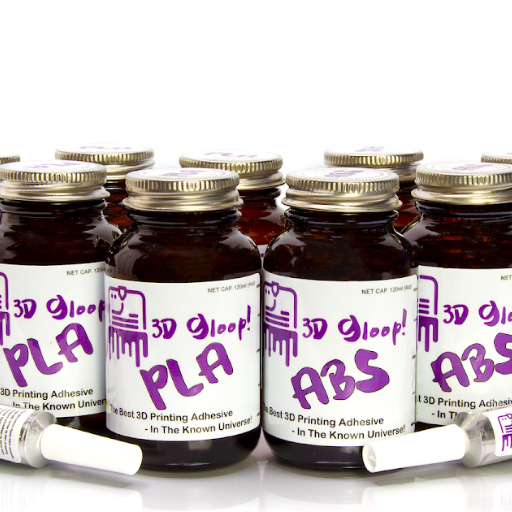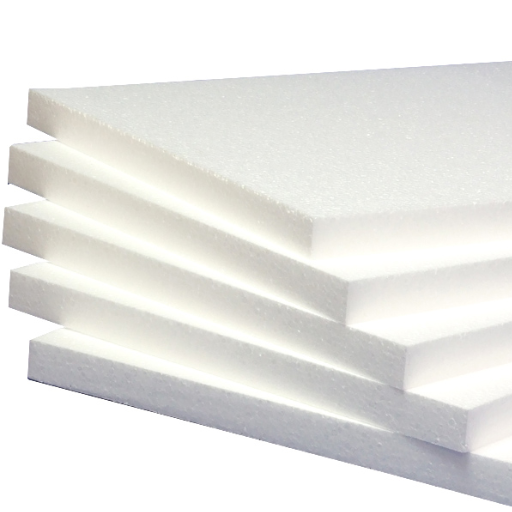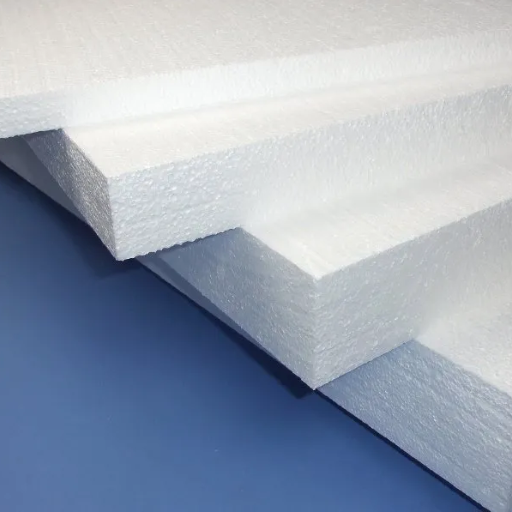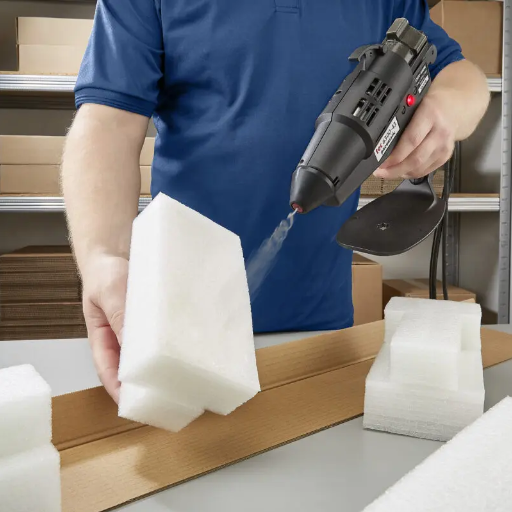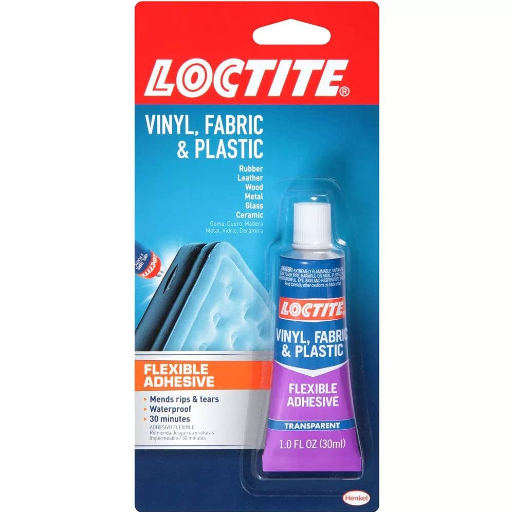Fixing fabric to plastic requires precision, especially if the bond is to withstand wear and tear. This is critical in any kind of craft, in household repairs, or any DIY project. Success relies exclusively on approach and materials. This guide helps you pick the right adhesive, prepare, and execute to precision. Each step of the way, you’ll have the knowledge and confidence needed to achieve professional-looking results, making your crafts and repairs visually appealing.
What is the Best Glue for Fabric to Plastic?

The most suitable adhesive for sticking plastic to fabric is flexible bonders like E6000 and Loctite Vinyl Fabric & Plastic Adhesive. These kinds of binders have been designed to secure adhesion of assorted materials with precision and flexibility to avoid being brittle or broken down. Soft, flexible structures are also necessary. Clean both surfaces before using the glue. Follow the guidelines set forth by the manufacturer, including even application and equal glue distribution. Be sure to ‘set’ the bond long enough and do not disturb the area in question so to maximize adhesion.
Types of Glue for Fabric to Plastic
The chemical properties and intended use determine the glue used for the above bonding. The best-suited type glue includes the following.
- Cyanoacrylate Adhesives (Super Glues): Super glues or cyanoacrylate adhesives are fast acting and super strong with a strong bond for fast connection. These adhesives will be best used for lightweight materials. On the downside, super glues may lack flexibility and become brittle with the passage of time and lose effectiveness with movement.
- Silicone-Based Adhesives: These adhesives are known for their flexibility and relative durability. They work excellently in forming seals between fabrics and plastics. They do well in moisture and temperature change, thus can be used indoor or outdoor.
- Polyurethane Adhesives: These are some of the most versatile and provide good strength for the bond in a range of materials such as fabric and plastic. They are also good when it comes to water resistance along with impact which makes them useful in harsh conditions.
- Hot Melt Adhesives (HMA): Specialized sticks formulated for use with fabric perform well under hot conditions and with certain types of plastic while bonding swiftly. They tend to be not as powerful as heavy duty industrial adhesives, but they make up in convenience when needed in non-temporary or lower stress environments.
- Specialized Fabric-to-Plastic Adhesives: E6000 and Loctite vinyl fabric and plastic adhesive are specialized fabric to plastic adhesives that provide the user with the advantages of great tensile strength and flexibility, making the bond tough to peel and resistant to cracking. These adhesives are designed specifically for the applications mentioned, integrating UV and temperature resistance to further enhance its durability.
It is essential to study material compatibility, environmental conditions, and particular mechanical stresses the bond will be put under during these factors. All boundaries have distinct advantages and disadvantages in all cases. Appropriate preparation of surfaces, such as following specified measures of bond application and curing, enhances bond strength and longevity.
Best Adhesives for Attaching Fabric
When it comes to adhesives, applying fabric, you need to first determine the type of fabric to use, the form of the application, and even how lasting the bond will be. For instance, adhesives that involve fabric stitches would usually be divided into spray adhesives, liquid adhesives and fusible web adhesives. Each category offers unique benefits tailored towards specific requirements.
Spray adhesives work best on large surfaces; 3M Super 77 and Krylon Easy-Tack are good examples. They are best for surfaces that need temporary bonds as they allow for repositioning of the fabric. These adhesives are perfect for quick and easy projects, but the washing and high-stress use may pose problems.
Gluing also works for materials and areas likely to experience heat. It also works on oven gloves and is a safe option given that Aleene’s Fabric Fusion and Gorilla Fabric Permanent bonds to various materials. Temporary weld adhesives are also appropriate as they allow for flexibility after wear. Unlike urine cement, glue is more fitting to fix seams and other parts that welds fail with respect to wearable materials.
In a stitching-free application, fabrics can be held together using an iron with Fusible web adhesives like HeatnBond and Pellon Fusible Web. As with any technique that uses an iron, each fabric type should be tested separately and these should only be put on edges that will not be uncovered. This product is great for hems or repairs that require a pristine, polished surface. Lower liquid adhesive performance may outlast these options in high-stress situations.
Selecting a specific adhesive type requires evaluation of moisture or heat exposure as environmental factors, as well as the intended use of the fabric, and cleaning requirements. Adhering to manufacturer guidelines concerning application as well as curing processes will guarantee performance and durability.
How to Properly Glue Fabric to Plastic?

Here are the proper steps to glue fabric to plastic:
- Clean the Surfaces: Make sure that the fabric and plastic surfaces are clean. Remove all traces dirt, dust, or grease. Cleaning the surfaces with a damp cloth or soft detergent will be enough, just remember to dry them afterwards.
- Choose the Right Adhesive: A multipurpose fabric adhesive is perfectly suited. For stronger glues, strong epoxy or contact cement will do as long as they’re confirmed to be plastic compatible. Ensure the adhesive used is effective on both materials to avoid any inconveniences.
- Apply the Adhesive:
- For spray adhesives, put a light thin coat of glue on both pieces to be attached, and for liquid apply sparingly.
- If using liquid glue, put a reasonable amount with a brush or a nozzle to reduce excess liquid.
- Join the Surfaces: After putting the adhesive and applying it evenly, press the fabric to the plastic gently to hold it in position while aligning the edges precisely to prevent any movement that will create wrinkles or bubbles.
- Secure and Cure: To secure bond areas, clamps or other protecting weights such as lead shots should be used. Let the adhesive cure for the recommended time from the manufacturer.
- Inspect the Bond: Check the bond area after curing to confirm strong and uniform adhesion. If any changes are needed, do them as soon as possible.
These are simple steps that, when combined with the instructions, will help you ensure a long-lasting bond between fabric and plastic.
Applying Glue: Tips and Techniques
- Choosing the Right Glue for the Job
To make sure that performance and longevity is achieved, selecting the right adhesive is critical. For fabric glued to plastic, preferable options include polyurethane and silicone glues, as they offer flexibility and environmental resistance to dampening factors like moisture and temperature shifts. For extreme strength, Epoxy adhesives can work but often are too inflexible for fabric.
- Surface Preparation Is Key
Effective surface prep work will always increase adhesion strength. Consider cleaning contaminants off the fabric and plastic surfaces first, then ensuring they both are dirt and moisture free. Furthermore, any oil contaminants must be removed by scrubbing the plastic with isopropyl alcohol, while the fabric’s pre-treatment needs to be washed off. Onto the plastic, some light sanding with fine-grit sandpaper will greatly improve grip by creating micro-abrasions.
- Application Techniques for Enhanced Performance
When applying to a bond, uniform application is crucial, so with a fine tip or brush he should achieve even application sparingly around the surfaces requiring bond. Also, avoid over-application as this leads to excess glue oozing out which when dried forms weak points. Depending on the chosen adhesive heat or pressure can be applied to improve adhesion, this are especially useful for some whose bonding effectiveness increase under warm conditions.
- Curing Conditions Matter
For adhesives to work properly, they need particular curing conditions. Follow the manufacturer’s guidelines for curing time and temperature precisely, along with any other specified environmental factors. For some adhesives, low humidity can slow curing, while high temperatures can diminish the working time. If possible, allow a bonded assembly to cure in a controlled environment chamber to improve adhesion strength and durability.
With a systematic approach, along with precise application methods and techniques, it is possible to achieve a satisfactory bond in a fabric-to-plastic adhesion project that is both functional and visually appealing.
What Products are Used for Gluing Fabric to Plastic?

Gluing plastic and fabric together entails the selection of an adhesive that will sustain along with being effective. Here are some of the most notable options:
- Spray Adhesives – 3M Super 77 and products alike are highly multifunctional. They give uniform coverage which suits lightweight jobs such as bondings.
- Contact Cement – Contact cement is streamable and reliable, and thus perfect for all projects that require a permanent bond, along with a degree of flexibility.
- Polyurethane Adhesives – Examples include Gorilla Glue and other similar brands. Polyurethane adhesives are extremely durable and water resistant, thus ideal for rigorous applications.
- Hot Glue – This type is best for unprofessional, rapid solutions as it is easy to handle but not very strong.
To get the best possible outcomes, ensure compatibility between the adhesive and the materials and with the manufacturer’s instructions.
Popular Fabric Adhesives
As fabric adhesives are made specifically to unite textiles, they must offer flexibility. Each of the following listed down are some of the most popular fabrics.
- Beacon Fabri-Tac – This fast-drying clear adhesive works on various fabric types like leather and lace and is known for creating a permanent bond. The adhesive is excellent for both craft and repair projects.
- Aleene’s Fabric Fusion – Provides a strong, flexible bond that is permanently effective and non-toxic once dry. It withstands machine washing, so it can be used across many different types of fabric.
- Heat n Bond Ultrahold – Provides reliable, no sew, iron on adhesive bonding for heavier fabrics, making it a favorite for use in hemming, decorative cloth applique, and other textile embellishment.
- Dritz Liquid Stitch – This stitch is a sewing alternative used for permanent adhesion. It has a wide range of applications from mending clothes to fabric arts and others.
- E6000 Fabri-Fuse – This name in the market describes an adhesive acclaimed for its industrial-strength feature. It is excellent for both heavy-duty and delicate fabric projects. It forms a clear, flexible bond which withstands washing and wear.
When selecting a fabric adhesive, consider types of fabric, washability, and project specification. Optimal bonding performance can be achieved by surface cleaning and testing with small pre-application.
Heavy Duty and Extra Strong Options
These types of fabrics are highly formidable. They are specially designed to withstand severe usage and demanding conditions. Beacon Fabri-Tac Permanent Adhesive is another heavily advertised because of how fast it dries and its bond to denim, canvas and leather fabrics. It is also a heat and washer-proof guaranteeing long-lasting performance.
An equally recommendable option is Loctite Vinyl, Fabric & Plastic Repair Adhesive due to its flexible and waterproof bond. It is suitable for repairing outdoor gear, upholstery, and heavy-duty home applications. It also features great reliability over projects tested with various environmental stresses due to its high tensile strength.
An excellent option for industrial-grade works is 3M Super 77 Multipurpose Adhesive Spray. This multipurpose spray is remarkable because of its ease of use and very high bond strength. Accomplishing larger projects will not be an issue as the spray is suitable for fabric and other materials such as wood and foam. It dries clear and works effectively under heavy wear conditions.
Selecting an adhesives that is designed for maximum strength ensures that projects will maintain functionality and actively work for them for as long as possible while enduring intense stress and repeated use.
Using Spray Adhesive for Fabric
Spray adhesives offer a greater ease of use when it comes to bonding fabric as compared to other products in the market. Restore fabric or surface that is clean and dry, free of dirt before applying the product. For best results, clean the fabric before attempting to bond it with something else. Clean off any external factors that can affect the bond. When applying, maintain a distance of 6-8 inches to ensure even coverage. Wait 30 seconds to 1 minute for the fabric pieces to become tacky. After this time, the pieces should be pressed together.
When working with bigger or more detailed fabric jobs like upholstery or crafting, a permanent spray adhesive specifically labeled for fabric offers better hold. Most newer sprays withstand moisture and heat, providing reliable durability over time. Also, it is best to use a low VOC (volatile organic compound) adhesive to lower environmental and health damage. When used properly, spray adhesive acts as a dependable and effortless fabric bonding solution that works great when used repeatedly.
How to Clean and Prepare Plastic for Gluing?

Preparation steps to clean a piece of plastic before gluing include:
- Clean the Surface – Use warm soapy water in washing the piece of plastic to clean dirt and oils that may be present. The surface should then be rinsed well and dried thoroughly.
- Remove Residues – Oil as well as some other residues should be dealt with using isopropyl alcohol (rubbing alcohol). Avoid using strong chemicals because they might end up damaging the plastic.
- Sand the Area – The surface should be treated to gentle sanding using fine-grit sandpaper. This makes the surface better for adhesion by creating a rough surface for the glue.
- Wipe Clean – The sanded piece of plastic should be wiped with clean dry cloth or blown with compressed air to remove dust.
- Test for Compatibility – Make sure that the glue you intend to utilize is appropriate for the type of plastic you are using, as some types of plastics need particular adhesives to bond properly.
Importance of Cleaning Surfaces
To achieve bonds that last, critical prep work must be done, including the removal of dirt and oil. Cutting edges from stronger adhesives is made by residuals of grease and oil, dust, grime, or chemical residues, making surfaces virtually impossible to bond. Research demonstrates that even small amounts of unwanted matter on a bonding surface will reduce the force of adhesion by 50%. A bond that is too weak cannot withstand demanding conditions or erosion over time. Some techniques of removing used up matter include solvent cleaning, alkaline-based cleaners, or even ultrasonic cleaning. This thorough process prepares the surface for industrial use by ensuring consistent friction, minimizing energy gaps, and enabling adhesives to work efficiently for critical tasks like aerospace and automobile assembly, which make sure that every component works seamlessly together.
Best Practices for Surface Preparation
- Assessment of Surface Condition
Begin by inspecting the substrate for possible contaminants, damage, surface irregularities, as well as other areas of previous work done on the surface. Prompt action on signs of oxidation, corrosion, and residuals from machining like oils will help preserve the integrity of the substrate.
- Selection of Appropriate Cleaning Methods
The cleaning technique employed should be appropriate to the material in question and its intended function. For example, abrasive blasting is appropriate for cleaning very thick older layers of corrosion, while refining oils and other fine particulates is best achieved through chemical solutions like solvents or alkalis.
- Surface Profiling
Optimal surface profile will ensure enhanced mechanical adhesion due to an increased surface area. Employing grit blasting or sanding until the desired roughness (micron range) as defined by industry standards such SSPC or ISO is achievable will further enhance the outcome.
- Moisture and Environmental Control
Work area should also be controlled for humidity and temperature since moisture would encourage corrosion and weaken adhesive bonds making the assembly unreliable. Ideal conditions as per the manufacturer’s instructions are needed for consistent results.
Following these best practices can help manufacturers, engineers, and technicians improve components life and operational performance to mitigate failures and cost in critical applications.
Can You Use Super Glue on Fabric to Plastic?

fabric to plastic can indeed be bonded with super glue, however, this will vary dependent on the materials being used and how they will be used. Super glue works best on non-porous materials like plastic, therefore it’s most effective on these surfaces. However, In regard to fabric, its porous structure may diminish the bond strength. If a reliable bond is preferred, an adhesive specially formulated for fabric would be a better option, such as fabric glue or multi-surface adhesive which sticks to both fabric and plastic. You must also ensure that the surfaces are clean and dry before application for the desired results.
Pros and Cons of Using Super Glue
Pros:
- Rapid Bonding Time: Super glue is best used in time sensitive situations as it begins to set within seconds. Since its curing process is sped up by moisture, adhesion is pretty much immediate on the right surfaces.
- Strong Adhesion on Non-Porous Materials: Another benefit of super glue is the strong bond it provides to non-porous materials, including but not limited to plastic, metal, glass, and ceramics. Super glue can also be relied on for a variety of other uses.
- Minimal Application Effort: Super glue is effective with small areas of porous materials and thus only a tiny amount of super glue is needed to achieve a strong bond. This results in precise craftsmanship with a low wastage rate.
Cons:
- Limited Effectiveness on Porous Surfaces: Fabric and wood are examples of materials that hinder effective bonding. With glue, the resulting bond is made worse due to the porous nature of the material.
- Brittle Bond: Super glue bonds tend to be strong, but not after long periods of time. They also become exposed to stress, extreme temperature, or moist environments which can result in loss in certain conditions.
- Health and Safety Concerns: The fumes from cyanoacrylate super glue can be irritating to the tissues of the respiratory system and eyes while accidental skin contact may cause unwanted adhesion and irritation. Therefore requires good airflow and precautionary measures while using it.
- Not Ideal for Heavy Loads: Super Glue: Super glue does not suit applications with high-load bearing capabilities because its strength, in comparison to industrial-grade adhesive, is weak.
With super glue’s characteristics in mind, it can be determined whether this is the right adhesive for the user’s needed application or whether other adhesives will offer a better fit.
Alternatives to Super Glue
A number of alternatives exist that enhance performance in ways super glue can’t based on the specific requirements:
- Epoxy Resin
Epoxy adhesives have great flexibility and are one of the strongest types of adhesives. These adhesives are mainly used on metal and wood since their bond is meant for heavy-duty workspace. Also, these spreads tend to undergo quite a bit of stress, deal with temperature changes, and even chemical corrosion. For epoxy, resin and hardener must be mixed first which gives rise to a curing process.
- Polyurethane Adhesives
Polyurethane adhesives offer flexibility and strength, making them suitable for bonding dissimilar materials such as plastic and metal or wood and ceramics. These adhesives are moisture-resistant and effective for both indoor and outdoor applications. Additionally, polyurethane can accommodate thermal expansion and contraction, reducing the risk of cracking under fluctuating temperatures.
- Acrylic Adhesives
Acrylic based adhesives are known for their effectiveness and for providing fast curing times as well. Not only are their curing processes fast, but also their resistance to extreme factors like UV rays, weather changes and even high temperatures. Because it’s bondable to a diversity of substrates such as metals, plastics and composites, they’re a preferred option for industrials assembled and repairs.
- Silicone Adhesives
Silicone adhesives can be described as having flexibility and being able to withstand extreme cases. Attributes Like thermal stability and moisture resistance makes it useful for sealing and bonding in automotives, construction, and electronics. Silicone adhesives unlike super glue are elastic which is useful for applications that involve movement or vibrations making them much more effective.
With all the alternatives that have been provided, users can evaluate which option best meets the needs of the project in terms of adhesive type, bond strength, durability, and reliability under certain environment conditions.
When to Choose Epoxy Over Super Glue
You want an adhesive or bonding agent for use in an extremely harsh environment with exceptional strength and durability? Look no further than Epoxy. Works best on heavy duty projects unlike super glue which is most effective when used in lightweight material. Industrial work also leans more towards epoxy because of its ability to withstand moisture and chemicals for long periods of time, extreme temperatures, and its strong bond chemically. Not to mention, epoxy is the best option when working with metals, ceramics, and composites due to the high reliability and structural integrity needed. Regarded as being better than super glue in most demanding scenarios, epoxy does take a longer time and requires precise mixing of resin and hardener for curing but the result makes it worth it. This is why epoxy is the best choice for automotive repairs, structural assemblies and even the harsher marine environments.
Reference Sources
1. Polyester (PET) Fabrics Coated with Environmentally Friendly Adhesive
- Published: 2020
- Key Findings:
- A novel, environmentally friendly adhesive system was developed to replace the traditional resorcinol-formaldehyde-latex (RFL) system, which contains toxic components.
- The new adhesive, based on ethylene glycol diglycidyl ether (EGDE) and diethylenetriamine (DETA), achieved comparable adhesion strength (17 N/mm) between PET fabrics and rubber.
- Surface modifications were characterized using advanced spectroscopy techniques, confirming successful coating and improved interfacial adhesion.
- Methodology:
- PET fabrics were treated with the EGDE-DETA adhesive system.
- Adhesion properties were tested under varying reaction conditions, and the chemical structure of the modified fabrics was analyzed using ATR-FTIR and XPS.
- Significance: This study highlights a sustainable alternative for fabric adhesion in composite materials, reducing environmental and health risks1.
Frequently Asked Questions (FAQs)
Q: What are the best products used to attach fabric to plastic?
A: Some of the best products used to attach fabric to plastic include 3M Super 77, Gorilla Glue, and craft glue specifically designed as an adhesive for fabric to plastic. Always check for a strong adhesive that can create a permanent bond.
Q: How should I prepare the surfaces before applying adhesive for fabric to plastic?
A: To prepare the surfaces, clean them thoroughly with acetone to remove any grease or dirt. If the plastic is smooth, you may also want to roughen it slightly with sandpaper to enhance adhesion.
Q: Can I use regular glue for fabric and plastic, or do I need a specific type?
A: It’s best to use a specific adhesive for gluing fabric to plastic, such as contact adhesive or a fabric glue designed for this purpose. Regular craft glue may not provide the strong bond necessary for durability.
Q: What is an expert tip for applying glue to fabric and plastic?
A: An expert tip is to apply a small amount of glue to both surfaces you want to bond. This ensures a strong bond. After applying, press the edges together firmly and use masking tape to hold them in place while the glue sets.
Q: How long does it take for the adhesive to dry when bonding fabric to plastic?
A: Drying times can vary depending on the adhesive used. Most fabric glues will require at least 24 hours to cure fully, but some products, like 3M Super 77, may allow for quicker drying times. Always refer to the manufacturer’s instructions for specific drying times.
Q: Is it possible for the glue to bleed through the fabric, and how can I prevent this?
A: Yes, glue can bleed through the fabric, especially if it’s thin or porous. To prevent this, use a small amount of glue and apply it carefully. Additionally, you can test on a scrap piece of fabric first to see how much adhesive is necessary.
Q: What should I do if there are rips or tears in the fabric I want to attach to plastic?
A: If there are rips or tears, it’s advisable to repair them before applying the adhesive. Use a strong adhesive to bond the ripped edges together, allow it to dry fully, and then proceed with attaching the fabric to plastic.
Q: Can I use a sealer after gluing fabric to plastic for added durability?
A: Yes, applying a sealer can enhance the durability of the bond. After the adhesive has fully dried, you can use a clear adhesive sealer to protect the edges and ensure a long-lasting hold.
















